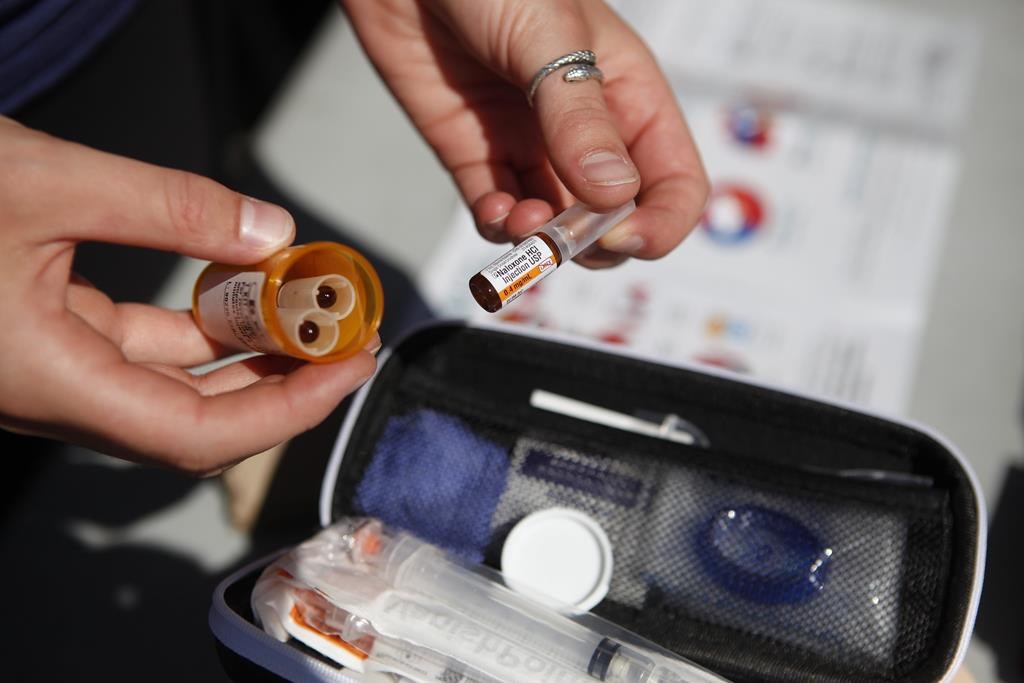Health officials in Ontario’s Simcoe Muskoka region are raising concerns about the rate of overdose deaths in the Barrie area as plans for a supervised consumption site are stalled.

The Simcoe Muskoka Direct Health Unit released a statement earlier this week which stated deaths due to opioid poisoning in the City of Barrie remain about double what was tracked before the pandemic, with 60 deaths in Barrie in 2022.
The rate of opioid deaths in Barrie is also about double the provincial average, which health officials say is something that could be helped with a supervised consumption and treatment services site.
Plans for a supervised consumption site have been in the works for years, with a proposed location at 11 Innisfil St., also known as 80 Bradford St., unit 940 in Barrie. The proposed site would be run by the Canadians Mental Health Association’s Simcoe County branch.
Endorsed by the City of Barrie and the health unit and approved by the federal government, associate medical officer of health Dr. Lisa Simon says approval and funding from the Ministry of Health are what is holding things up.
“The drug toxicity crisis very much continues here, continues to be an urgent issue, and there are a number of services available for people who are experiencing harms from substances in our region, but one key service that we continue to lack is a consumption and treatment services site,” she says.
“There has been ongoing communication between CMHA and Ministry of Health staff, and we understand that all requirements on their end have been fulfilled and that it’s really awaiting a decision by the minister’s office.”

In response to Global News’s questions regarding the delay, the Ministry of Health says it has allocated up to $31.3 million in annual funding for up to 21 Consumption and Treatment Services across the province. That list, however, did not include the financing of the site in Barrie.
“All applications are subject to a rigorous screening process. Timelines for the application screening process vary; most organizations submit application documents and information over a period of time,” the statement read.
But while health officials in Barrie wait for approval, the consequences for those in need are fatal, and health officials warn toxic drug supply is only worsening.
“In the case of Barrie and the rest of Simcoe Muskoka and Ontario, rates of opioid-related toxicity deaths started to increase significantly in 2016 when fentanyl was introduced into the illegal and unregulated drug supply, and things took an additional major turn for the worse when the pandemic started,” Simon says.
She warns that people using drugs don’t know what they are getting. With more potent and dangerous drugs mixed into the supply, “the potential for overdose is very high.”
“During the pandemic, (we saw that) the drug supply seemed to get increasingly toxic and unpredictable, and people also had their usual routine disrupted. They may not have been using near other people who may have been able to respond if they had an overdose; they may not have been able to access the usual health and social services they had access to before. So all of these things combined to make the situation even worse,” Simon told Global News.
While she says it’s hard to pinpoint why Barrie’s numbers are so high, Simon notes that things like poverty, homelessness, other social factors and Barrie serving as a regional hub all play a part.
She says toxic drug use and overdoses are also growing trends in many cities around the same size.
Simon says that having a supervised consumption site is beneficial in multiple ways, like having health-care professionals respond to overdoses immediately.
The second benefit, she notes, is being able to direct those most in need with onsite resources to address the underlying issues that lead to their drug use.
“Another key purpose and outcome that we see from these sites are that they allow people who use drugs to come indoors and receive services, and so, therefore, the community benefits by having less public drug use and less public disposal of drug-related equipment,” she says.
For Simon, while there is no easy fix to the issue, having a safe place for people battling with addiction will help.
“This is a very complicated issue that requires a multi-pronged response, and we hope to see a consumption and treatment services site in our city as part of that so that marginalized members of our community really have a place to go to access the services that they need,” she says.




Comments